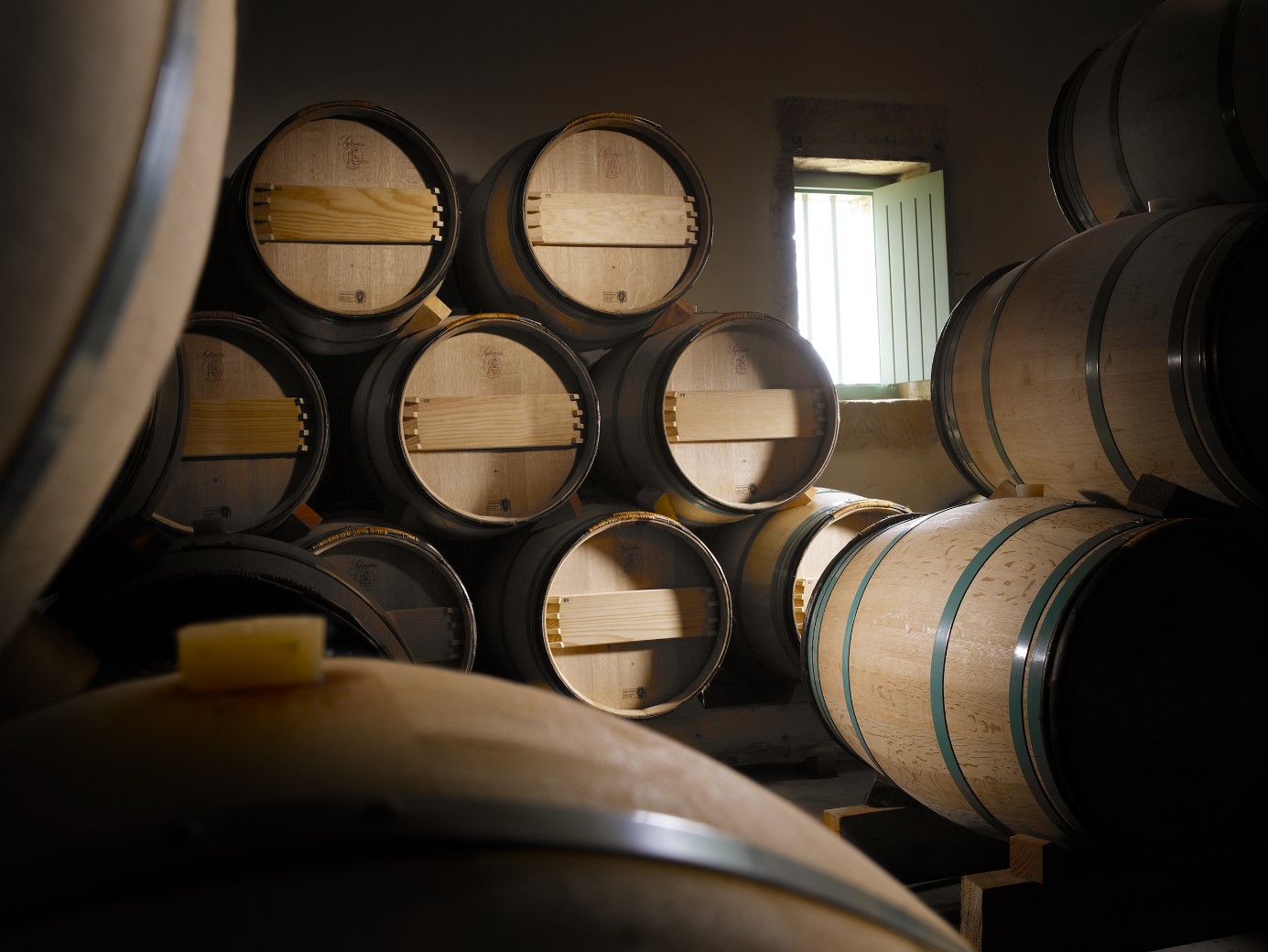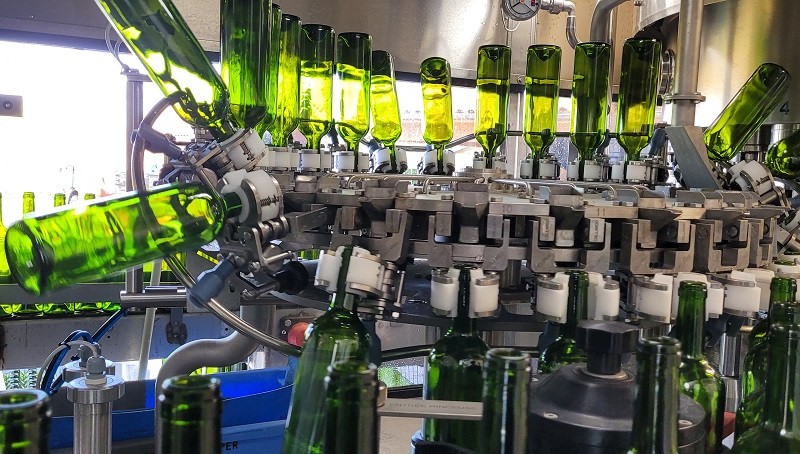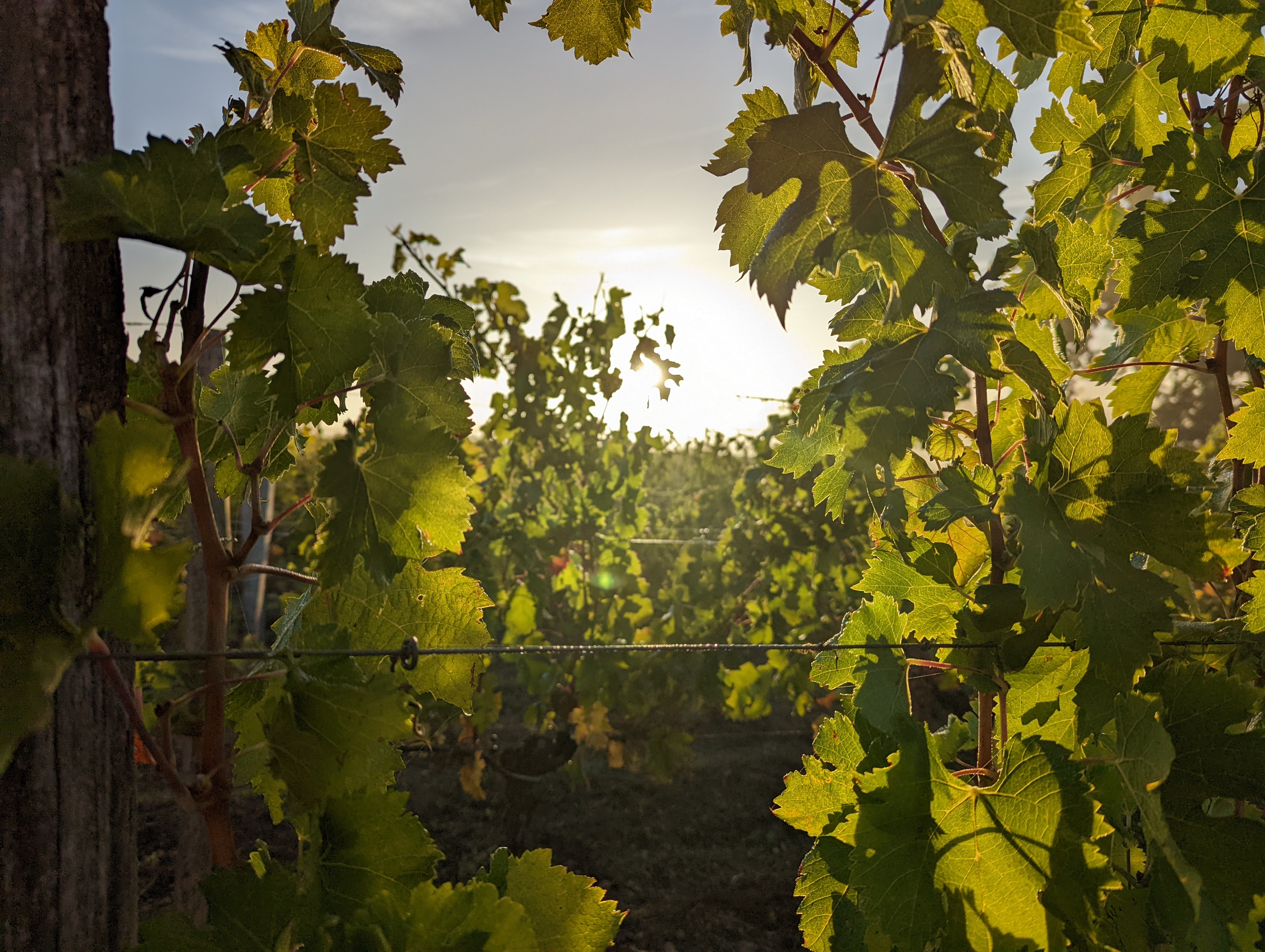Let's discover the main steps of wine making in the cellar
Crushing
The winemaking process takes places in the cellar. It designates several processes that take place one after the other to transform the fruit of the harvest into wine.
Just after the harvest, the grapes are rapidly taken to the cellar to avoid any deterioration or oxidation. After destemming, the berries are gently crushed. It means grapes are pinched (not pressed) before fermentation. It facilitates the interaction between yeasts and sugar and, consequently, the fermentation during the maceration. The yeasts present on the skins of the grapes ferment the sugar present in the pulp. This step does not occur in the production of white wine.
Pressing
The pressing phase is crucial. The type of pressing will significantly determine the quantities of chemical compounds that will be found in the wine. There are two types of pressing depending on whether it is involved in the vinification of a white wine or a red wine. During white vinification, it is a mechanical operation which consists of pressing the grapes in order to extract the grape must before fermentation. The skins and seeds are thus removed to vinify only grape juice.
As part of red winemaking, pressing is carried out after alcoholic fermentation to obtain the press wine.
Fermentations
Alcoholic fermentation
Alcoholic fermentation follows a natural and biochemical process. Under the action of yeasts and in the absence of oxygen, the sugar contained in the grapes is transformed into alcohol. Thus, the winemaker fills a vat or a barrel with the crushed grapes and controls the temperature, which is ideally around 25 degrees Celsius for red wine and between 18 and 20 degrees Celsius for whites. When all the sugars have disappeared, the alcoholic fermentation process stops naturally. The wines are then called “dry”.
Malolactic fermentation for reds
This second fermentation is caused by bacteria (micro-organisms) which transform malic acid into lactic acid by releasing carbon dioxide. Discovered in the 1960s, it has become essential for red wines to make them rounder. It softens the wine, and also gives it greater microbiological stability. It is generally not sought after for white wines and rosé wines, for which we wish to preserve a certain liveliness, provided by malic acid.
Fermentation requires perfect technical expertise to maintain the wine at the right temperature, namely between 20°C and 23°C.
Wine ageing
Wine ageing follows fermentation. This other key stage of wine production is the longest since it generally lasts between 8 and 24 months or more depending on the appellation, until bottling. At La Rose Perrière, the ageing lasts around 14 months. The vast majority of ageing is done either in stainless steel vats or in oak containers. The objectives are to clarify and stabilize the wine on a microbiological, physical and chemical level and to promote the development of aromas while softening the naturally present tannins. The care given during ageing must make it possible to achieve the optimum quality level and ageing potential sought by the winemaker to ensure the future of the wine until its consumption.
Whether ageing is carried out in vats or barrels, the evolution of the wine will be influenced by various parameters such as temperature, hygrometry or the presence of oxygen. The more or less strong action of one or more of these parameters can lead to very different types of wines.
Thus, by mastering the ageing tools and storage conditions (temperature, humidity and air speed), the winemaker can modify the characteristics of the wines they produce in order to get the most out of the vintage and to orient the final product towards the expectations of the consumers.
The choice of barrel is also decisive in the ageing of the wine and will have an impact on the final product. Several criteria must be taken into account by the winemaker:
- size: the bigger the wooden container, the less important the wood-wine exchanges are.
- number of uses: the barrels are rarely used for more than 5 vintages or 5 years because the wood becomes exhausted through repeated use. Some cellar masters may choose to mix new barrels and barrels used several times to give the wine a particular aromatic pattern. At Château La Rose Perrière, we have chosen to switch to 80% new barrels.
- level of toasting: depending on the aromatic impact desired, a particular level of toasting of the barrel is chosen. Light to heavy, the toasting will bring more or less subtle grilled, spicy or woody notes. At La Rose Perrière, the toasting is medium in order to preserve the authenticity of the fruit.

Blending
Blending is the assembling the different batches of wines available in the cellar. There are often several assembly phases. After a more or less long ageing, a blend is made to put all or part of the wines together. The blend becomes more precise and refined thanks to several tastings organized by the cellar master. They allow him to obtain valuable information.
At Château La Rose Perrière, as in many vineyards in Bordeaux, we work on blending several different grape varieties (Merlot, Cabernet Franc, Cabernet Sauvignon and Malbec for our red wines, Sauvignon Blanc, Sémillon and Muscadelle for our white wines). Each variety brings a particular character. It is common that a grape variety prevails, like Merlot in our red wines Château La Rose Perrière, La Perrière and Clos Les Grandes Versannes. The winemaker can also choose to make single-varietal wines. In this case, the blends will take into account the particularity of each lot, we then speak of plot selection.

Bottle ageing
Once bottled, the wine is no longer in contact with oxygen but continues to evolve naturally. Thus, new aromas develop during ageing in the cellar, giving it more complexity and elegance.
The ageing of the wine in the bottle is initially carried out by the reduction process, without the intervention of oxygen. Wine contains multiple living micro-organisms which continue their action. A wine for ageing will improve as it ages in the bottle and thus reach its peak after several years, from 5 to 20 years and more for the greatest Grands Crus. This phase of ageing is crucial. During these months of waiting, the wine will finish rounding out and acquire complex organoleptic sensations.
To ensure that the wines age properly, it is recommended to choose a rather dark place with a stable temperature between 10°C and 14°C. The humidity level should be around 75% with an optimal ventilation.
Knowing the long and meticulous process of making wine and the winemaker's intention behind each step, there is no doubt that you will now enjoy your glass of wine with another sensory approach!

